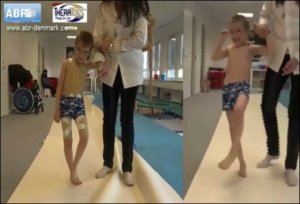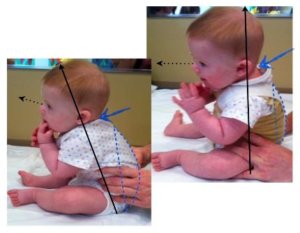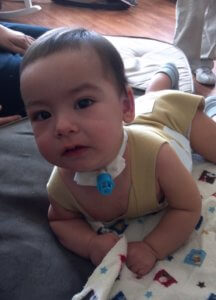Case Studies
On a daily basis therapists prove that methods and tools they use for each unique client work. However, every diagnosis is unique and contains unique clinical goals. As a clinical community, how do we know that a specific tool is helping? How do you prove it?
We appreciate therapists who think outside the box on behalf of their clients, and who utilize tools outside of standard methods. Examples include therapists trying TheraTogs on a child with Pompe’s disease and providing us their findings, and another tried with an infant with Prader Willi and reporting to us that their results tell them that TheraTogs will be helpful for this client base.
How You Use TheraTogs matters. Not just to us, but also to other therapists and caregivers working with children or adults with similar indications and diagnoses. Please provide us your findings, outcomes data, and any information about specific results that might make a difference in the life of another patient who hasn’t yet tried TheraTogs, or a fellow clinician who hasn’t used TheraTogs in the same way you have.
Help others share in the outcomes you’ve experienced!
NEW! Ehab Mohamed Abd El-Kafy. (2014) The clinical impact of orthotic correction of lower limb rotational deformities in children with cerebral palsy: a randomized controlled trial. Clinical Rehabilitation 2014, Vol. 28(10) 1004-1014. Ehab Mohamed Abd El-Kafy
Maguire et al. (2012) How to Improve walking, balance and social participation following stroke: a comparison of the long term effects of two walking aids- canes and an orthosis TheraTogs- on the recovery of gait following acute stroke. A study protocol for a multi-centre, single blind, randomized control trial. BMC Neurology 2012, 12:18. Maguire et al
Fenneman, P, Ries, JD. (2010) Effects of TheraTogs on the Postural Stability and Motor Control of a 7-year-old Girl with Down Syndrome and Severe Motor Delays. Poster presented at APTA Combined Sections meeting, February 2010. Click here to Read
Flanagan A, Krzalz J, Peer M, Johnson P, Urban M. (2009) Evaluation of Short-Term Intensive Orthotic Garment Use in Children Who Have Cerebral Palsy. Pediatric Physical Therapy 2009;21:201-204. Click here to Read
Sefecka, A. (2009) Case Report: The AtaxiTog System As An Adjunct To Traditional Physical Therapy Intervention For A 13-Year-Old With Postural Instability Post Non-Traumatic Cerebellar Injury;A Five-Week Program. Poster presented at APTA Combined Sections meeting, February 2009. Click here to Read
Rojas A., Weiss M., Elbaum L. (2008) The Effect of TheraTogs on the Gait of a Child with Cerebral Palsy: A Case Study. Florida International University Department of Physical Therapy, Miami FL. Poster presented at FIU Honors College Annual Research Conference, April 2008. Click here to Read
Engelmeyer, Kelly SPT, et al. (2007) The Effect of TheraTogs on Gait in a 5-Year-Old with Spastic Hemiplegia. School of Physical Therapy, Maryville University, St. Louis, MO. Poster presented at APTA Combined Sections meeting, February 2007. Click here to Read
Burt, Marlenne G. (2007) A Strapping Case Study: Linking NDT with TheraTogs Strapping System and Other Orthotics. NDTA Network Publication, January February 2007. Click here to Read
Siracusa C, Taynor M, Geletka B, Overby A. (2005) Effectiveness of a biomechanical intervention in children with spastic diplegia. Pediatric Physical Therapy 17(1): 83-84. Detailed Abstract, Pediatric Physical Therapy (PDF) Poster Presentation.
| Video case study From Dr. Karen Pape: Body centering, stable core, limb input, brain input through postural control. |  |
| Infant gains 20% on GMFM score: Wunzi Infant System helps an infant to significant gains in postural control – and all the follow-on benefits that enables. |  |
| Infant gains left side engagement, posture, tummy time, and unsupported static sitting after 30 days of Wunzi wear. | |
| 6-year-old with cerebellar ataxia sees Immediate gains in balance and gait control. |  |
| 67-year-old Adult 8 months post-stroke shows significant gains with a full TheraTogs strapping application to address postural control, drop foot, leg rotation, stride length, and gait speed. |  |
Click the links below to obtain release forms if you want to submit a success story or case study:
Other Resources
PT Now (clinical summary database, APTA members only)
APTA STROBE (steps on writing, publishing from the APTA)

